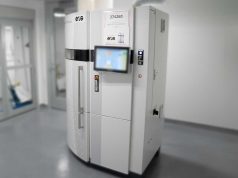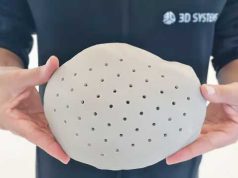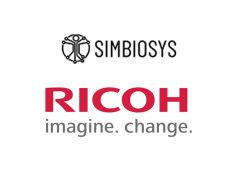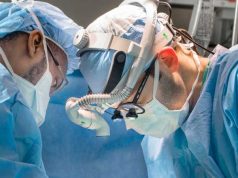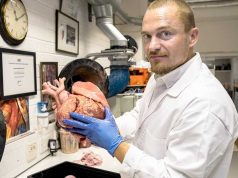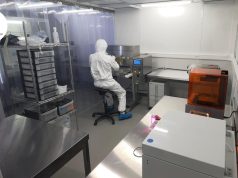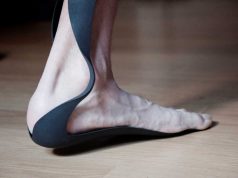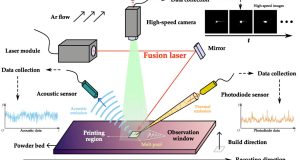3D printing specialist 3D Systems has unveiled its Regenerative Tissue Program. The program aims to provide unique solution for surgical procedures. 3D Systems launched the program due to significant advances in the development of bioprinting solutions. By combining bioprinting technology, biocompatible 3D printing materials and patients’ own cells, the company constructs vascularized, patient-specific living human tissues.
“The level of innovation we’ve been able to unlock with our solutions for regenerative medicine is allowing us to deliver an unmatched level of complexity and precision,” said Dr. Jeffrey Graves, president and CEO, 3D Systems. “We’re proud of the progress we’re making in the development of bioprinting solutions for human organs including lung, liver, and kidney. With this as the foundation, combined with the expertise gained through years of experience in the manufacturing of personalized medical implants, we have quickly moved into the development of patient-specific human tissues that can dramatically alter how patient care is delivered.”
Through the power of advanced 3D modeling, novel bioinks, and high-speed high-resolution 3D bioprinters, 3D Systems is developing an acellular biointegrative scaffold to regenerate adipose tissue. This scaffold can be combined with intraoperative cellularization (i.e., fat grafting) with adipose cells harvested from the patient during surgery. This results in a regenerative scaffold that mimics the patient’s anatomy and physiology to help deliver improved surgical outcomes— addressing the clinical need for a long-term reconstructive solution for soft tissue applications.
The company will leverage its VSP® surgical planning solutions to plan and design these patient-specific scaffolds to help improve surgical outcomes and elevate the patient experience. As a pioneer in personalized healthcare solutions, 3D Systems has worked with surgeons, including reconstructive plastic surgeons, for over a decade to plan more than 150,000 patient-specific cases, and manufacture more than two million implants and instruments for 100+ CE-marked and FDA-cleared devices. Leveraging VSP for its tissue program, 3D Systems’ biomedical engineers will be able to collaborate with surgeons — beginning with the patient’s digital data — to design and manufacture biointegrative scaffolds to match the patient’s anatomy.
A Patient-specific Reconstructive Solution for Breast Cancer Survivors
According to the World Health Organization, 2.3 million women were diagnosed with breast cancer globally in 2020, and the five-year survival post-diagnosis has increased to more than 90% in high-income countries. With the increased survival rate, there is a growing need for long-term regenerative solutions for breast reconstruction. Current options for reconstruction after mastectomy include implant-based reconstruction (i.e., inserting a silicone/saline implant) and autologous flaps (i.e., harvesting live tissue from the patient). Both are prone to post-surgical complications and often require additional procedures.
Over the past 12 months, 3D Systems has conducted in-depth research that is guiding its efforts into building a platform for tissue regeneration. This includes completing multiple large animal studies demonstrating a proof-of-concept for biointegrative scaffolds for adipose tissue regeneration. In particular, the company is investigating host-mediated engraftment of a passively-implanted angiogenic scaffold to explore the ability to grow new blood vessels. Additionally, they have demonstrated the ability for direct vascular connection of an anastomosed (i.e., connecting directly to the vasculature) scaffold. The scaffolds are constructed at the human scale from a family of biocompatible materials with tunable material properties which the company believes will be able to address and personalize human breast-size tissue reconstructions.
“Through the Regenerative Tissue Program, we now have a unique, vertically integrated technology platform that enables us to produce detailed hydrogel scaffolds for multiple soft tissue applications,” said Katie Weimer, vice president, regenerative medicine, 3D Systems. “Our ability to 3D print high resolution and large volume biointegrative, vascularized tissue sets us apart and opens tremendous opportunities in providing a unique solution to breast reconstruction surgeons and patients. I’m inspired by the potential of RBT as our first tissue application, and believe this work will be expanded into future applications such as lumpectomies, breast augmentation, and facial implants.”
Find out more about 3D Systems at de.3dsystems.com.
Subscribe to our Newsletter
3DPResso is a weekly newsletter that links to the most exciting global stories from the 3D printing and additive manufacturing industry.




